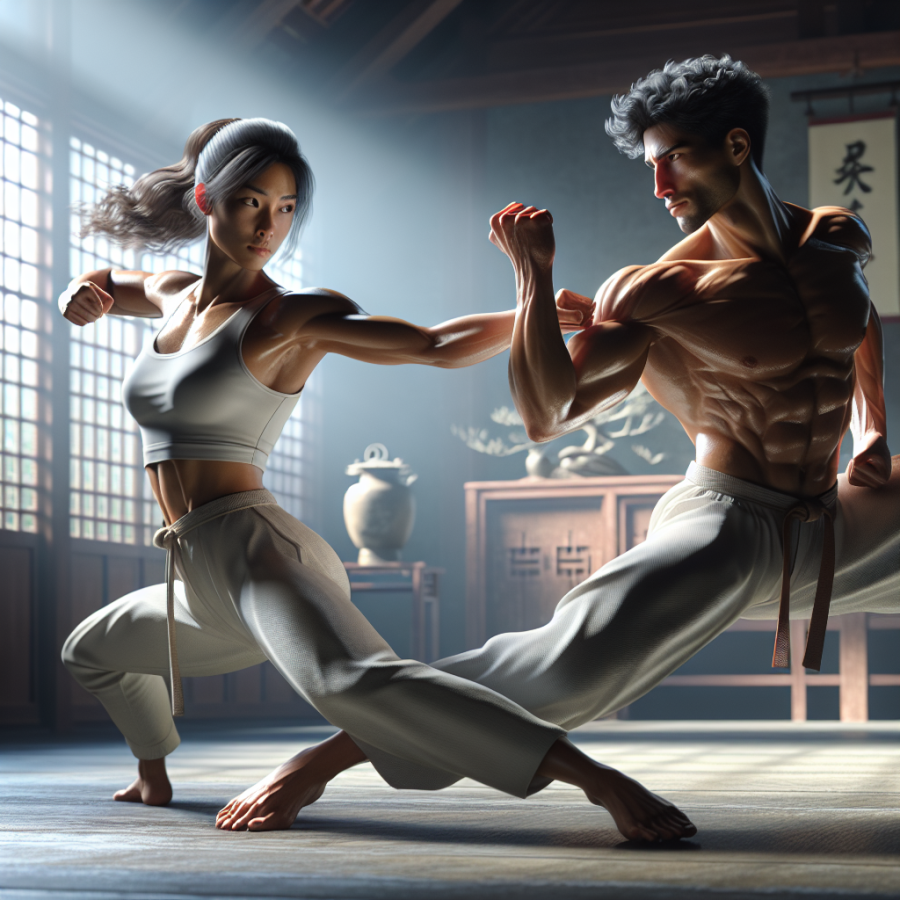An In-Depth Look at The Rich History of Kung Fu
Kung Fu is not just an ancient martial arts discipline; it is a synthesis of centuries of Chinese culture and philosophy embedded in its systemic practice. A delve into the rich history of Kung Fu reveals its transformative journey from a simple survival mechanism to a profound cultural phenomenon.
The earliest trace of Kung Fu dates back to the Xia Dynasty (2070 – 1600 BC), where it was initially developed as a hunting and defense mechanism against wild animals. However, it was during the reign of the Yellow Emperor Huangdi (2698 BC) that the practice of martial arts was formalized and used as a method to train soldiers for warfare.
The concepts of Yin and Yang, the Five Elements, and the Eight Diagrams played a significant role in the development of Kung Fu during the Zhou Dynasty (1046 - 256 BC). These practices were deeply ingrained within the teachings and helped shape the martial art's strategic direction.
However, the turning point in Kung Fu's history was undoubtedly the advent of Buddhism and the establishing of the Shaolin Monastery in 495 AD. Here, the Indian monk Bodhidharma introduced a special form of exercises to the monks, which were later integrated with other fighting techniques, resulting in the legendary Shaolin Kung Fu.
From the Tang to the Song, Yuan, Ming, and Qing Dynasties, distinct types of Kung Fu styles were developed. These various styles reflected the philosophy, artistry, and creativity of time. The most notable styles included Tai Chi, Bagua, Xingyi, and others, each with their own unique characteristics and interpretations of the martial art form.
The last few centuries have also observed some significant developments in Kung Fu. During the late Qing Dynasty (1644 – 1912 AD), the Boxer Rebellion highlighted a significant uprising during which people trained in Kung Fu rebelled against foreign influence.
With the Chinese diaspora, Kung Fu found its way to the West and rapidly gained popularity in the 20th century, most notably pushed by the prowess and charisma of figures like Bruce Lee. This recognition has ensured the global spread of Kung Fu, thereby preserving this ancient form of martial arts for generations to come.
In the realm of media and literature, Kung Fu has influenced the creation of various art forms such as films, comics, video games, and more. This has been instrumental in showcasing this rich martial arts form to the world, thereby ensuring its continuity and evolution.
Read also:
Pedaling the Skies: The Quest for Human-Powered Flight
Exploring the Artistry and Technical Proficiency in Kung Fu
Kung Fu, a martial art discipline that has its roots in ancient China, impressively combines elements of self-defense, competition, health, fitness, and spiritual development. The captivating blend of artistry and technical proficiency in Kung Fu makes this martial art undeniably exceptional.
One of the most striking features of Kung Fu is its emphasis on fluid movement and beautiful forms. The artistic component of this martial art is evident in every pose and every strike, every block and every movement. The execution of techniques is not merely about force or speed, but also about how elegant and visually appealing they appear. This aesthetic quality makes watching Kung Fu performances almost like viewing a dynamic dance or ballet. Each form or sequence, whether it's a kick, a punch or a block, is executed with a thought towards the overall aesthetics, creating not just a display of martial prowess, but a true work of art.
Beyond this artistry, Kung Fu is also a tremendous display of technical proficiency. Becoming a skilled Kung Fu practitioner demands intense mastery of the body and mind. The discipline places high demands on strength, flexibility, balance, agility, speed, and stamina-- all while demanding precise execution of intricate movements and techniques. Despite the fluid, graceful exterior, there is a rigorous, demanding discipline that tests the limits of what the human body can do.
Within Kung Fu, there is a rich variety of styles, each one emphasizing different aspects and philosophies. Some styles are focused on power and explosive strength, others excel in quick, nimble movements, some aim for defensive fluidity, while others employ aggressive, rigid techniques. Each style has its own unique rhythm and flow, its own distinct techniques and forms, and its own training methods. However, regardless of the style, all demand and develop a high level of physical and mental discipline.
The learning process in Kung Fu is also an interesting blend of the practical and metaphoric. Training sessions usually start with basic exercises and drills that gradually build up into complex forms and sequences, a gradual and methodical way of developing skills. Additionally, philosophical and ethical teachings play a significant role in training, encouraging practitioners to cultivate not only physical strength but moral and spiritual capacities as well.
In closing, the craft of Kung Fu is a beautiful synergy of artistry and technical proficiency that transcends the realm of mere physical prowess.




